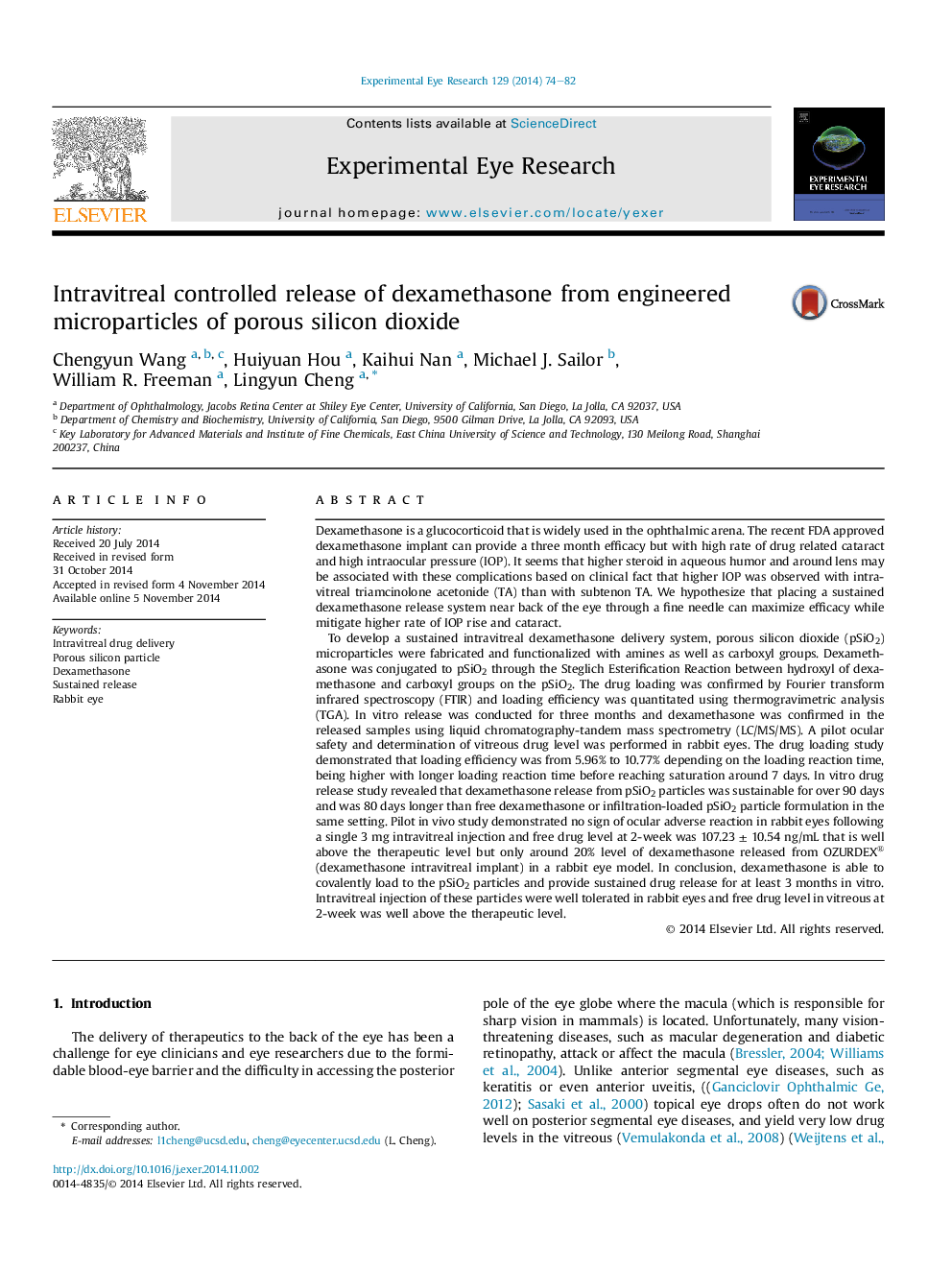| کد مقاله | کد نشریه | سال انتشار | مقاله انگلیسی | نسخه تمام متن |
|---|---|---|---|---|
| 6196861 | 1602593 | 2014 | 9 صفحه PDF | دانلود رایگان |
- Dexamethasone (Dex) can be covalently grafted to pSiO2 by Steglich Esterification.
- Dex in vitro release from pSiO2 particles was 80 days more sustainable than free drug.
- 3mg of pSiO2-Dex was safe in rabbit eyes and provided 107ng/mL of Dex in vitreous at 2-week.
Dexamethasone is a glucocorticoid that is widely used in the ophthalmic arena. The recent FDA approved dexamethasone implant can provide a three month efficacy but with high rate of drug related cataract and high intraocular pressure (IOP). It seems that higher steroid in aqueous humor and around lens may be associated with these complications based on clinical fact that higher IOP was observed with intravitreal triamcinolone acetonide (TA) than with subtenon TA. We hypothesize that placing a sustained dexamethasone release system near back of the eye through a fine needle can maximize efficacy while mitigate higher rate of IOP rise and cataract.To develop a sustained intravitreal dexamethasone delivery system, porous silicon dioxide (pSiO2) microparticles were fabricated and functionalized with amines as well as carboxyl groups. Dexamethasone was conjugated to pSiO2 through the Steglich Esterification Reaction between hydroxyl of dexamethasone and carboxyl groups on the pSiO2. The drug loading was confirmed by Fourier transform infrared spectroscopy (FTIR) and loading efficiency was quantitated using thermogravimetric analysis (TGA). In vitro release was conducted for three months and dexamethasone was confirmed in the released samples using liquid chromatography-tandem mass spectrometry (LC/MS/MS). A pilot ocular safety and determination of vitreous drug level was performed in rabbit eyes. The drug loading study demonstrated that loading efficiency was from 5.96% to 10.77% depending on the loading reaction time, being higher with longer loading reaction time before reaching saturation around 7 days. In vitro drug release study revealed that dexamethasone release from pSiO2 particles was sustainable for over 90 days and was 80 days longer than free dexamethasone or infiltration-loaded pSiO2 particle formulation in the same setting. Pilot in vivo study demonstrated no sign of ocular adverse reaction in rabbit eyes following a single 3 mg intravitreal injection and free drug level at 2-week was 107.23 ± 10.54 ng/mL that is well above the therapeutic level but only around 20% level of dexamethasone released from OZURDEX® (dexamethasone intravitreal implant) in a rabbit eye model. In conclusion, dexamethasone is able to covalently load to the pSiO2 particles and provide sustained drug release for at least 3 months in vitro. Intravitreal injection of these particles were well tolerated in rabbit eyes and free drug level in vitreous at 2-week was well above the therapeutic level.
Journal: Experimental Eye Research - Volume 129, December 2014, Pages 74-82
